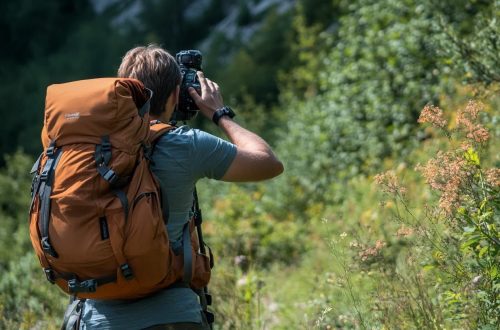Welcome to our Outdoor Sport and Recreation Guide! This comprehensive handbook is designed for both beginners and seasoned enthusiasts who are passionate about exploring the great outdoors. We’ll cover a wide range of activities, providing tips and insights to gear up and make the most of your adventures. Whether you’re a hiker, a cyclist, a swimmer, or just someone who loves to be outside, this guide is your one-stop resource for all information related to outdoor sports and recreation. Be prepared to embrace nature like never before!
Choosing the Right Outdoor Sport or Recreation Activity
Selecting the right outdoor sport or recreational activity is a personal decision, hinging upon various factors. You’ll want to consider your physical fitness level, personal interests, and the resources available to you.
Physical Fitness Level
Before you dive headfirst into a new activity, it’s important to take into account your current fitness level. You don’t want to choose a sport that’s too strenuous if you’re just starting your fitness journey. On the other hand, if you’re a seasoned athlete, you might look for an activity that presents a new challenge.
Personal Interests
Consider what you enjoy. Do you prefer individual pursuits, or do you thrive in a team setting? Are you attracted to adrenaline-filled activities such as rock climbing or white-water rafting, or do you prefer more contemplative pastimes like hiking or birdwatching?
Resources Availability
Finally, consider the resources you have at your disposal. Some activities may require specialized gear or access to certain locations. Ensure that you are willing and able to invest in the necessary equipment and travel to the necessary spaces for your chosen activity.
By considering these factors, you can choose an outdoor sport or recreational activity that is not only enjoyable but also beneficial to your overall well-being.
Popular Outdoor Sports and Recreational Activities
Here are some popular outdoor sports and recreational activities that you might want to explore:
- Hiking: Hiking is a versatile activity that caters to outdoor enthusiasts of all fitness levels. From serene nature trails to challenging mountain treks, hiking offers numerous opportunities to enjoy the outdoors.
- Cycling: Whether it’s a leisurely bike ride along a scenic path or an adrenaline-filled mountain biking adventure, cycling is a fantastic way to stay fit while taking in your surroundings.
- Camping: There’s nothing quite like setting up a tent under the stars. Camping allows you to disconnect from the hustle and bustle of daily life and reconnect with nature.
- Fishing: Fishing can be a peaceful way to spend an afternoon, a chance to learn about local aquatic life or a thrilling game of patience and skill.
- Kayaking: This water-based activity is an exhilarating way to explore rivers, lakes, and coastlines. It’s also a great upper-body workout.
Remember to consider your interests, fitness level, and resources when choosing a sport or recreational activity. The most important thing is to have fun and enjoy your time in the great outdoors!
Cycling
Cycling is an exceptional activity that provides not only a robust physical workout but also a mental release. This low-impact sport suits people of all ages and fitness levels, offering the flexibility to set your own pace and difficulty.
Benefits of Cycling
Cycling comes with an array of benefits:
- Cardiovascular fitness: Regular cycling stimulates and improves heart, circulation, and lung function, reducing the risk of cardiovascular diseases.
- Muscle strength and flexibility: Cycling significantly enhances overall function in your lower body and strengthens your leg muscles without overstressing them.
- Improved mental well-being: Like other forms of physical activity, cycling can reduce feelings of stress, depression, or anxiety, fostering an overall sense of well-being.
- Environmental impact: Cycling is a green mode of transport. By choosing to cycle rather than drive, you’re reducing your carbon footprint.
Types of Cycling
There are various forms of cycling to suit your individual preferences:
- Road cycling: This involves riding a bike designed for road use on paved surfaces. It’s an excellent choice for those who enjoy speed, traveling long distances, and exploring urban environments.
- Mountain biking: This is a more adventurous type of cycling. Mountain biking takes place off-road, often over rough terrain.
- Leisure cycling: This type of cycling is perfect for those who prefer a relaxed pace, perhaps as a family activity or in a park.
- Cyclocross: This is a form of off-road racing that involves various terrains and obstacles.
Getting Started with Cycling
To get started with cycling, you need a bike that suits your needs and fits you properly. Visit a local bike shop for advice on the right bike for you. Additionally, you’ll want to invest in a sturdy helmet for safety, and it’s worth considering other gear such as cycling shorts, gloves, and a water bottle. Once you’re equipped, start slow! Aim for shorter distances then gradually increase as your fitness and confidence grow.
Cycling provides a fantastic opportunity to explore your local area, improve your fitness, and make new friends within the cycling community. So, gear up, and hit the road!
Water Sports
Water sports are a thrilling way to combine physical activity with the refreshing qualities of water. Whether you’re seeking a serene pastime or adrenaline-pumping action, there’s a water sport out there to match your desire.
Benefits of Water Sports
Engaging in water sports benefits both the body and mind:
- Cardiovascular health: Like most sports, water sports often involve vigorous activity, which improves heart health and lung capacity.
- Muscle tone and strength: Water provides natural resistance, making it an excellent medium for strengthening and toning muscles.
- Stress relief: The calming nature of water combined with the distraction of the activity can help reduce stress and anxiety.
- Socializing: Many water sports are group activities, providing a fantastic opportunity to meet new people and strengthen social bonds.
Types of Water Sports
There is a wide variety of water sports catering to different interests and skill levels:
- Swimming: A fundamental water activity, swimming is a total body workout that enhances cardiovascular fitness, builds strength, and improves flexibility.
- Surfing: This sport involves riding waves while standing on a surfboard. It requires balance, strength, and a love for the thrill.
- Kayaking: Kayaking is a versatile water sport that can range from peaceful lake tours to navigating rapid river waters.
- Sailing: This calls for mastery over the equipment and understanding of the wind and currents. It’s a combination of technical skills, adventure, and relaxation.
- Scuba diving: This underwater sport enables you to explore the underwater world, observing marine life in its natural habitat.
Getting Started with Water Sports
Starting with water sports requires some basic equipment and training. Safety should be your top priority. Depending on the sport, you may need a life jacket, helmet, or other protective gear. Training or lessons from certified instructors are highly recommended to ensure you learn proper techniques and safety procedures. Remember, everyone starts as a beginner, so don’t be afraid to take that first splash into the world of water sports!
Water sports offer an adventurous twist to physical fitness, an opportunity to connect with nature, and a platform for social interaction. So, don’t wait, dive into the world of water sports and feel the exhilaration!



